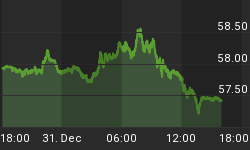When we started out in this business, one of the first saws of trading we learned was: Bulls make money, Bears make money, Pigs get slaughtered. That simple admonition is coming full circle as the stock market has been muscled to all time highs by central bankers seeking to protect their fiat currency Ponzi scheme at all costs. For anyone not paying attention, that cost will be passed onto you.
We have been staunch advocates that the most important and overriding information one can have on any market is the trend. It is hands down the best guide one can have, and too few give it just due. In an up trending market, bulls make money. Bears who opt to fight the obvious trend are on the wrong side of momentum, and the tuition can be costly, but always a choice.
There have been numerous bear advocates for at least the past five years trying to pick a top. Such a futile endeavor ignores another old saw: more money is lost trying to pick tops and bottoms than at any other market phase. Richard Dennis, Long Term Capital Management are examples of purported professionals who chose to ignore the trend. Their losses were destructively huge, and they played the role of Pigs that were financially slaughtered.
Where are you as a stock investor in today's faux-Bull market? Are you a Bull, a Bear, or a Pig? If a Bear, clearly you do not understand the nature and function of one and are operating against the prevailing market strength. A mis-placed Bear in a Bull market is nothing more than an ego gone awry. Most who remain on the long side of the market more than likely considers him/herself a Bull. Unless one has been exceptionally select in being long, at this late phase of the market, those who are long and wrong are really playing the role of a Pig destined to be slaughtered.
Share prices are in the last stages of a Bull market. It can last another week, another month, another year, maybe even longer [?], we do not know and have no clue, nor do we even need to know. What we know for certain is that the market trend still points up. Just because a trend is up, however, does not necessarily equate to all stocks rising and showing profits. It is here where you need to know if you are being a Bull or a Pig.
During the latter phase of a Bull move, there is a lot of rotation in stock leadership. The initial leaders stop leading, and even their price may stop rising, moving more sideways, but definitely not producing the gains when the trend was in an earlier phase. These days, it is harder and harder to find quality stocks poised to undergo sustained gains. Even in a trending market, it does not always pay to be a Bull.
The number two consideration for "investing" in the stock market is a return on capital. The number one consideration is the return of capital. If your stock portfolio is not showing gains, your return of capital is at risk, and you are acting like a Pig in a Bull market under the misguided belief the market trend will bail you out of losing positions.
Another guiding saw: the first loss is almost always the best one. People do not like to take a loss. If in a store, and they see an item overpriced a dollar or two, they will not buy it. If their stock is losing a dollar or two or ten, they will not hesitate to hang on even when the cost of doing so is in the hundreds or thousands. Penny wise, Pound foolish.
In a trending market, one should only be in on the long side, a given. What is not a given is to be long and wrong in a trending market because a losing stock is telling you it is not a part of the trend.
Back to the initial question. If you are an active participant in today's market, are you a Bull, a Bear, or Pig? A smart Bull stays with winners and gets rid of losers, promptly. A smart Bear is on the sidelines. A Pig has no sense and is always at risk, but it is a choice.
There was an issue in sizing the monthly chart. The comment shows on the far left where price reached an exhaustion high in 2000. The horizontal resistance line, across the top, is where price is currently. The angle of the trend has increased, the steeper of the 2 lines, and it is possible for an even steeper one to form, if price goes into a blow-off phase in the next rally, if another rally ensues. For now, there is no end of the trend.
While 4260 is important support, the 4100 area is even more critical because it was also a previous high in August 2014. A close under 4260 would turn the trend sideways, while a close under 4100 would say the Bull move is done. This leaves a lot to the downside before one can say a turn has occurred, and that means staying long with winning stocks, with protective stops, and avoiding any losing positions.
Always, always protect and preserve capital.
There remains a series of higher highs and lows, even on the daily chart, adding to what the higher times frames are indicating, that the up trend has not ended.


















